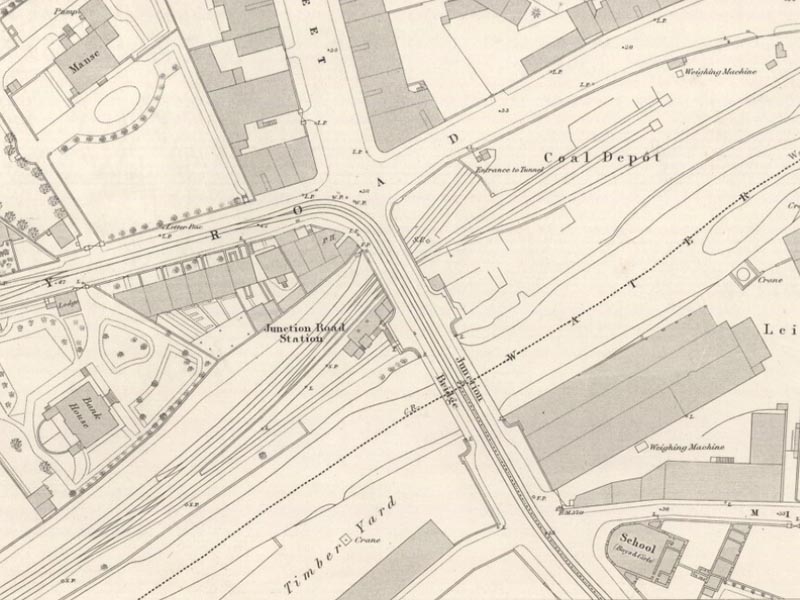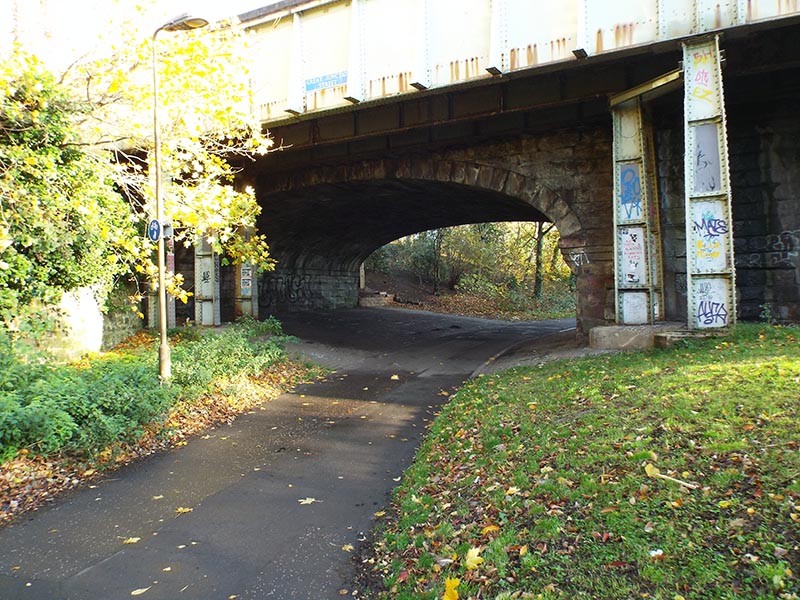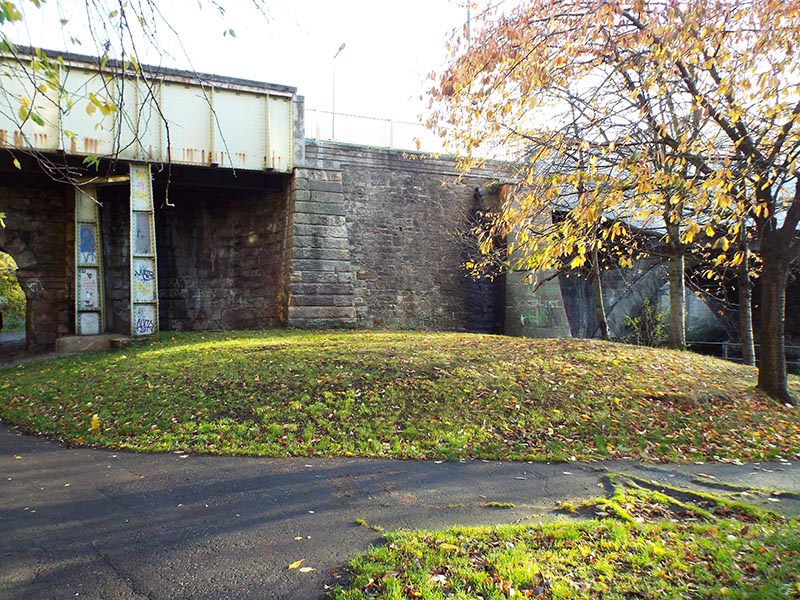Junction Bridge Railway Station

The Leith branch of the Edinburgh, Leith and Granton Railway was opened from Warriston Junction to North Leith on 10 May 1846. Traffic was originally horse-drawn and there was only one intermediate station, at Bonnington Bridge. City bound trains terminated at Scotland Street until the tunnel was opened through to Canal Street Station, adjacent to Waverley Station, in May 1847. The ELGR was amalgamated with the Edinburgh & Northern Railway in July 1847 and in 1849 the name of the combined company was changed to The Edinburgh, Perth and Dundee Railway. It was absorbed by the North British Railway in 1862.
In 1868 the North British Railway opened a new line from Abbeyhill to Bonnington and Trinity Junction which enabled the running of trains direct from Waverley to North Leith and/or Granton. Canal Street Station and the tunnel through to Scotland Street were both closed. In May 1869 stations were opened on the new line at Abbeyhill and Junction Road. At Junction Road the passenger station comprised a single platform face on the up side with the station buildings huddled against the south face of Junction Bridge and approached by a dog-legged open staircase from the pavement of Junction Bridge; and all built for the princely sum of £69. New station buildings and a new signal cabin, both built by the Edinburgh firm of Robert Bruce & Sons, were completed in late 1893. The new buildings included a sandstone booking office at road level on Junction Bridge and a standard NBR ‘small station’ timber building on the platform.

Although there were no passenger facilities at Junction Road until 1869 a coal depot was established on the north side of Junction Bridge, probably at the time the line was opened in 1846. It seems there was a long-established coal wharf on the Water of Leith at that point possibly handling coal shipped in from the north of England and Fife. In fact one of the objectors to the proposed ELGR Leith branch was a coal merchant, William Wilcocks, who acquired the lease of the site in 1843 and spent £150 on improving it. He sued for compensation and was awarded £170 by a jury in the Sheriff Court in January 1845. Later that month he made over his business to James Waldie who, in October 1833, had been the new Leith Police Commissioners' first contractor for cleaning the streets of ‘dung and fulzie’. Several other coal merchants used the site among the more long-lasting of whom were James McKelvie and James Sword. J & A. Currie, later Currie Ltd., a firm of builders’ merchants also used the Junction Bridge depot. The depot was a busy, and noisy, place. When first built there was virtually no housing in the immediate vicinity but after the turn of the 20th century with newly occupied tenements in Helen Place, Largo Place and Coburg Street people began to complain about early morning shunting accompanied by engine whistles and, in 1906, petitioned the Town Council to have something done about it. This must have placed the Council in an embarrassing position for at that time they were receiving at the depot about 6000 tons per year of coal for the municipal electricity generating station.

Normal passenger services on the North Leith branch broadly comprised a half-hourly service in both directions between the hours of 5.00am and 11.30pm on week days with some augmentation during the peak times and on Saturdays and public holidays. That frequency was maintained for many years but patronage eventually turned to the tramcar and other forms of road transport. By 1922 the service had been reduced to run between 7.30am and 6.30pm and the equal interval timing had been abandoned. By December 1939 the service had been reduced to six trains per weekday, with only three on Saturdays. There does not appear to have been a Sunday service on the North Leith branch at any time. As well as the scheduled passenger service Junction Road station was used for the departure of many special trains for things like Sunday-school outings because these trains tended to be longer than could be accommodated at North Leith which had a very short platform and restricted clearances. The most spectacular train ever to use Junction Road was probably the special train run on Tuesday 22 September 1896 to carry the Czar of Russia to Balmoral from Leith where he had landed from the Imperial yacht.
The name of the station was changed to Junction Bridge on 1 July 1923 and it closed to passengers on 16 June 1947 with the withdrawal of passenger services on the North Leith branch. The coal depot continued in use until 1 August 1961 while the connection to Junction Mill was removed on 5 February 1968. The whole route of the line from Warriston Junction now forms part of the Water of Leith walkway. The site of Junction Road station is now a pleasantly wooded promenade with no indication that a railway station once stood on the spot. But old memories linger on in the name Coalie Park given to the area once occupied by the coal depot.